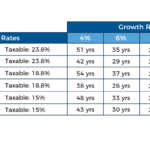One of the virtues of working in a broker-dealer or especially a wirehouse environment is that the firm makes a number of decisions for you as the advisor, greatly expediting the process of being able to quickly launch your business and focus on working with your clients. The bad news is that in at least some cases, it's much less expensive to simply set up your own advisory firm instead - especially if your focus is on charging AUM or other financial planning fees, such that there's no need to have a broker-dealer affiliation in the first place. The caveat, however, is that breaking away to become an independent RIA isn't "just" about the economics of working under a broker-dealer (or as a dual-registered advisor with the corporate RIA) versus your own RIA; it's also about going through the actual steps to actually create and launch your own RIA, because being independent truly means it's your responsibility to handle the setup process and make all the technology, platform, and other vendor decisions! Which for many advisors, is a process that can feel downright overwhelming.
But the reality is that many financial advisors have successfully made the transition, and it isn't necessary to reinvent the wheel with each breakaway to independence. In this guest post, Aaron Hattenbach of Rapport Financial, an RIA that he founded when successfully breaking away from Merrill Lynch in late 2016 (while retaining 100% of his clients), shares his own experience in breaking away from a wirehouse early in his career to go independent, including a detailed, step-by-step overview of his process to successfully launching his RIA.
Ultimately, the process does take a lot of work, from creating the legal RIA entity and going through the compliance registration process, to establishing your business bank and credit card accounts and getting a logo and business cards, setting up your initial technology platform (from a web domain and email provider, to your CRM and portfolio performance reporting tools), to choosing your initial vendors from your RIA custodian, and your office space! Unfortunately, the pressure to get launched quickly - especially when changing firms for a fast-launch RIA - means that a few mistakes may be inevitable, and Aaron does note the areas where, in retrospect, he could have better avoided unnecessary expenses, kept start-up costs lower, and curated better technology and service providers for his firm. But for any advisors who are serious about breaking away and forming their own independent RIA, Aaron's overview should provide much food for thought on your own breakaway, as well as some things you may want to consider in order to navigate it successfully!








 Welcome, everyone! Welcome to the 62nd episode of the Financial Advisor Success Podcast!
Welcome, everyone! Welcome to the 62nd episode of the Financial Advisor Success Podcast!

